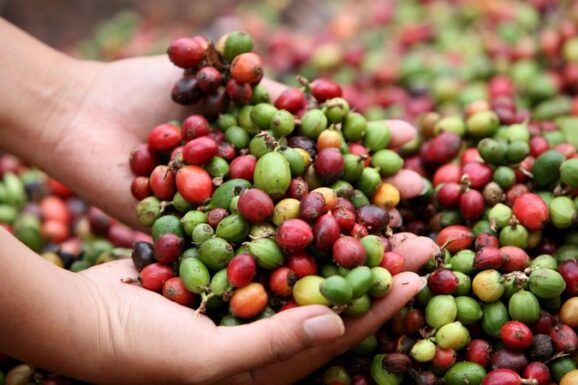Scientists Sequence A Coffee Bean Genome
This article is more than 2 years old
 Sequencing genomes is a pretty big deal in the science world. It can help diagnos previously elusive conditions or give us insight into the human race that we didn’t previously have, such as how much DNA we share we Neanderthals. The first sequencing was of a specific kind of bacteria back in 1977, and not long after, scientists sequenced the Epstein-Barr virus, which causes mono. Since then, scientists have sequenced all kinds of genomes of vegetables, fish, birds, reptiles, insects, and mammals, as well as that of the woolly mammoth. And of course, the human genome. Now, scientists have sequenced the Coffea canephora genome, a particular coffee bean that helps about a third of the world’s coffee drinkers get their fix.
Sequencing genomes is a pretty big deal in the science world. It can help diagnos previously elusive conditions or give us insight into the human race that we didn’t previously have, such as how much DNA we share we Neanderthals. The first sequencing was of a specific kind of bacteria back in 1977, and not long after, scientists sequenced the Epstein-Barr virus, which causes mono. Since then, scientists have sequenced all kinds of genomes of vegetables, fish, birds, reptiles, insects, and mammals, as well as that of the woolly mammoth. And of course, the human genome. Now, scientists have sequenced the Coffea canephora genome, a particular coffee bean that helps about a third of the world’s coffee drinkers get their fix.
Certainly, we don’t need to understand the genomic sequence of coffee to enjoy its benefits. But sequencing this particular bean gives scientists insights into how coffee has evolved over time, particularly when it comes to producing caffeine. Turns out, it’s unclear how exactly caffeine comes from these plants. The recent study published in Science may provide some answers—or at least some leads.
Coffee plants produce a compound called xanthosine, which is then modified (atoms are removed) by one enzyme, and then modified again (this time, atoms added) by another enzyme. A third and fourth enzyme add more atoms, and presto, you’ve got caffeine. It turns out that the enzymes necessary in the process are contained in all plants and do all kinds of things. But caffeine production began when a gene in the N-methyltransferase enzyme mutated (funny, that’s what happens to me when I drink too much coffee—hang on, let me get another cup). Interestingly, plants such as cacao and tea, which also contain caffeine, have a different evolutionary story than coffee. In a nutshell, the evolutionary process has created different vehicles for caffeine.
The caffeine in coffee contributes to a plant’s defenses by keeping pests away with high-dose toxicity. The toxicity also means that other plants find the soil around coffee plants difficult to grow in, keeping it free for the coffee to thrive there. But at the same time, low-doses of caffeine can be found in coffee plants’ nectar, which appeals to pollination insects by giving them a buzz, so to speak, as well as a heightened memory (and perhaps a positive one that keeps them coming back to the same plant). That explains a lot about people’s reactions to caffeine.
While all of this information is interesting, some scientists worry that it opens to the door to genetically modifying coffee, perhaps to create decaf coffee at the source. Similarly, perhaps tinkering with coffee’s genetic make-up would make it possible for us to make it healthier, or to make the beans impervious to climate change, which may prove necessary given that coffee plants are having a rough time right now in Central America because of fungus that likes the warmer temperatures. Luckily, the African species of coffee are more diverse, and may be the “key for ensuring that coffee can survive as an affordable crop.” The alternative is a dystopian future I shudder to imagine. Plus, just think of how bored RAPIRO would be.












